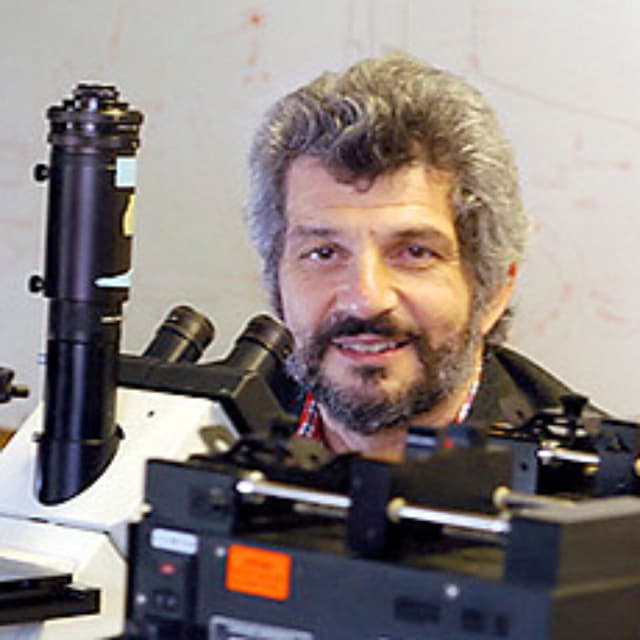Weitz, Sejnowski Elected to the National Academy of Sciences; Kavli Prize Laureate Grillner Elected NAS Foreign Associate

(Combined from Harvard University and Salk Institute releases)
April 28, 2010
David A. Weitz, co-director of the Kavli Institute for Bionano Science & Technology at Harvard University, and Terrence J. Sejnowski, executive committee member of the Kavli Institute for Brain and Mind at the University of California, San Diego, have been elected to the National Academy of Sciences (NAS). Sten Grillner, one of three recipients of the 2008 Kavli Prize in Neuroscience, was elected as a foreign associate.
Weitz, Sejnowksi and Grillner are among the 72 new members and 18 foreign associates from 14 countries receiving the honor in recognition of their distinguished and continuing achievements in original research

David A. Weitz
Weitz is an expert in the physics of soft condensed matter and an entrepreneur. Along with serving as co-director of KIBST, Weitz is Mallinckrodt Professor of Physics and of Applied Physics, and holds a joint appointment in the Harvard School of Engineering and Applied Sciences (SEAS) and the Department of Physics. He is also co-director of the BASF Advanced Research Initiative at Harvard, director of the Harvard Materials Research Science & Engineering Center, and involved with Raindance technologies, a start-up microfluidics-based company.
Weitz and his group study the physics of soft condensed matter, materials easily deformed by external stresses, electric, magnetic or gravitational fields, and even thermal fluctuations. The goal of this research is to probe and understand the relationship between mesoscopic structure and bulk properties. The group studies both synthetic and biological materials, with interests ranging from fundamental physics to technological applications and from basic materials questions to specific biological problems.
Weitz received his B.Sc. in Physics from the University of Waterloo and his Ph.D. in Physics from Harvard. Prior to his professorship at Harvard in 1999, he worked as a research physicist at Exxon Research and Engineering for nearly 18 years, leading the Interfaces and Inhomogeneous Materials Group and Complex Fluids Area, and held an appointment as a Professor of Physics at the University of Pennsylvania.

Terrence J. Sejnowski
Sejnowski's work on neural networks helped spark the neural networks revolution in computing in the 1980s. A Salk Institute professor, he joined the Salk Institute for Biological Studies in 1988, where he directs the Crick-Jacobs Center for Computational Neurobiology. An executive committee member of the Kavli Insititute for Brain and Mind at the University of California, San Diego, he also heads the Institute for Neural Computation and co-directs the NSF Science of Learning Center, both at UCSD.
A Howard Hughes Medical Institute investigator, Dr. Sejnowski tries to understand the computational resources of brains, and to build linking principles from brain to behavior using computational models. He pursues his goal by combining both experimental and modeling techniques to study the biophysical properties of synapses- the connections between brain cells- and the population dynamics of large networks of neurons.
He has created computer models of networks of neurons to explore the mechanisms underlying attention in the awake brain and brain rhythms in the sleeping brain and the links between them. These models also help explain how epilepsy arises from imbalances in brain circuits.

Sten Grillner
Grillner is one of three recipients of the 2008 Kavli Prize in neuroscience “for discoveries on the developmental and functional logic of neuronal circuits."
A Professor and Director of the Nobel Institute for Neurophysiology at the Karolinska Institute since 1987, his research has focused on the extraordinary capability of the brain to control movement. Early on he demonstrated that networks within the mammalian spinal cord can produce the detailed motor pattern of locomotion involving the coordination of hundreds of different muscles. In a paper published in 1987, he and colleagues went on to unravel the details of a core network of interacting interneurons in the lamprey as a vertebrate model system. The level of detail gained in this work was, and still is, unique in that it allows the observation of changes in behaviour caused by changing occurring at the cellular and network level. The cellular basis of locomotion, steering and posture is now understood in this biological model system, and the basic design appears conserved from cyclostomes to primates.
Grillner is a member of the Academia Europaea, Royal Swedish Academy of Science and the Nobel Assembly, and has received a number of awards including the Bristol Myers Squibb award in 1993 and the Reeve–Irvine award in 2002.